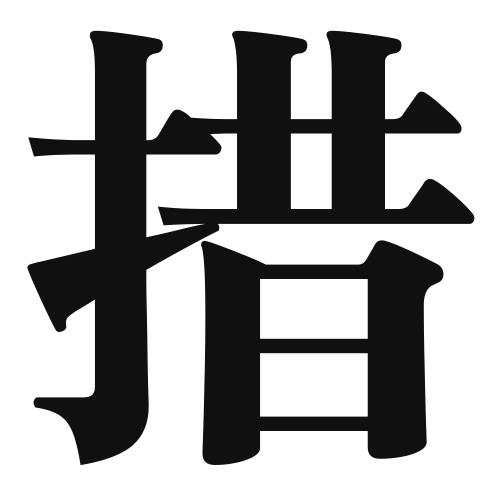1. Overview of Meaning
The kanji 措 (sō) generally means “to take” or “to set aside.” It conveys the idea of placing something down or making a decision to leave something behind.
2. Formation and Radical
Formation of the Kanji: The kanji 措 is a compound character (会意文字) that combines elements to convey its meaning. It consists of the radical 手 (hand), which relates to actions performed by hand, and the character 左 (left), suggesting a direction or placement.
Radical: The radical of 措 is 手 (hand), indicating that the character is related to actions involving the hands.
3. Examples of Usage
Common Words and Phrases: Some frequently used words that include 措 are:
- 措置 (sōchi) – measures, actions taken
- 措定 (sotei) – determination, decision
Example Sentences in Daily Conversation:
- この問題に対して、適切な措置を講じる必要があります。
- (We need to take appropriate measures regarding this issue.)
4. Synonyms and Antonyms
Similar Kanji: A kanji with a similar meaning is 取 (to take), but it emphasizes the act of taking something rather than setting it aside.
Opposite Kanji: An antonym is 置 (to place), which focuses on the act of putting something down rather than taking it away.
5. Cultural and Historical Background
Relation to Japanese Culture: The kanji 措 is often used in formal contexts, such as legal documents or official communications, reflecting the importance of decision-making in Japanese society.
Proverbs and Idioms: While there are no widely known proverbs specifically featuring 措, it is often used in phrases that emphasize the importance of taking action or making decisions.
